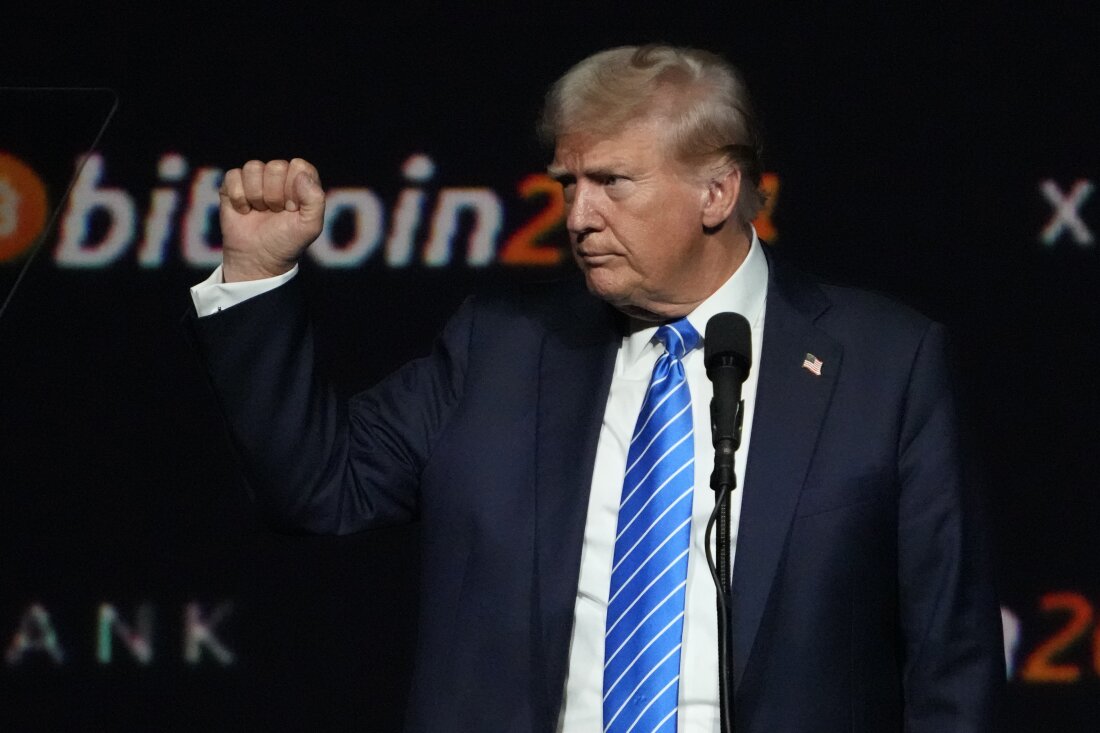Bitcoin Surges Past $71,000: The Impact of the 2024 U.S. Presidential Election
As we approach a pivotal moment in U.S. politics, Bitcoin is making waves in the financial sector, surging past the $71,000 mark for the first time since June. This increase is viewed by many traders as part of what has been termed the “Trump trade,” reflecting former President Donald Trump’s favorable stance towards cryptocurrencies during his campaign.
 Bitcoin’s recent price surge is in part due to increased political interest.
Bitcoin’s recent price surge is in part due to increased political interest.
The rise in Bitcoin’s value — now approximately $71,020 — is not just coincidence. According to data from the market, its price has seen a remarkable 70% increase in 2024, driven partly by inflows into Bitcoin Exchange-Traded Funds (ETFs) and growing speculation about the upcoming U.S. Presidential Election. Analysts note that Bitcoin’s historical performance during Q4 is typically strong, averaging an impressive 88% return since 2013, hinting at potential year-end momentum.
Political Influence on Crypto Markets
The optimism surrounding Bitcoin correlates significantly with the election outcomes. Reports suggest that if Trump wins, the regulatory environment for cryptocurrencies could shift favorably, enticing both retail and institutional investors. In contrast, Democratic nominee Kamala Harris has adopted a more cautious approach, proposing a structured regulatory framework for crypto assets. This divergence in political ideology creates a fertile ground for speculation, pushing traders to adjust their strategies.
Avinash Shekhar, co-founder of Pi42, highlights the impact of the inflows into Bitcoin ETFs, mentioning that there’s been about $3.1 billion funneled into these assets just in the past ten days. As the election on November 5 approaches, many investors are looking eagerly at their portfolios, hoping for Bitcoin to reach new heights. Some options traders are confidently betting that Bitcoin may hit $80,000 by the end of November, a stark indication of the bullish sentiment prevailing in the market.
The Ripple Effect of ETF Interest
Increasing interest in Bitcoin ETFs has been pivotal in lifting Bitcoin’s price. For instance, these ETFs have amassed $3.3 billion in net inflows this month alone, stimulating further demand for Bitcoin. The renewed market interest not only stems from the upcoming elections but also from a broader ‘risk-on’ sentiment seen across global markets, where traditional stocks are hitting new highs while Bitcoin strives to reclaim its prior glory. Notably, Coinbase and MicroStrategy stocks have also surged alongside Bitcoin, indicating a symbiotic relationship between these entities and the digital asset market.
Global Perspectives: The Case for Bitcoin in New Zealand
Michael Saylor, executive chairman of MicroStrategy and a self-proclaimed Bitcoin maximalist, recently discussed the immense potential Bitcoin holds for global investors, particularly in regions like New Zealand. He emphasizes that adopting Bitcoin could significantly enhance corporate balance sheets and aid in financial growth. Saylor advocates for the idea that lesser-capitalized regions have much to gain from Bitcoin’s unique investment proposition — a sentiment bolstered by his own massive stake in Bitcoin, which exceeds $1.1 billion.
 Michael Saylor underscores Bitcoin’s value as a global digital asset.
Michael Saylor underscores Bitcoin’s value as a global digital asset.
The Future of Bitcoin: Navigating Regulatory Waters
With varying perspectives on cryptocurrency regulations from political candidates, Bitcoin’s future might hinge on the election results. If there’s a shift in regulatory posture towards a more Bitcoin-friendly environment, as Saylor predicts, we could see even greater institutional adoption. Saylor envisions banks adopting Bitcoin as a mainstream asset, which may lead to a broader acceptance and integration of cryptocurrencies into conventional finance.
The concept of banking institutions becoming custodians of Bitcoin aligns with Saylor’s view of enhancing the asset’s safety and broad acceptance. However, it clashes with sentiments from some crypto purists who prefer the decentralized ethos that Bitcoin embodies. Saylor argues that regulated entities could help mitigate risks associated with asset seizure, reinforcing the need for a structured environment for cryptocurrencies to thrive.
Conclusion: A Pivotal Moment for Bitcoin
As we stand at the crossroads of potential regulation and political change, Bitcoin’s performance will likely reflect the larger narratives shaping the fiscal landscape. Whether it’s propelled by a Trump trade or bolstered by a potential Harris administration advocating for clearer guidelines, Bitcoin remains a focal point of interest leading up to the U.S. Presidential Election.
The coming weeks will be crucial as investors await election results, regulation clarity, and continued market dynamics — all factors that could significantly impact Bitcoin’s trajectory. The community watches with bated breath, eager to see if Bitcoin’s rally can transcend its past boundaries or if it will face new hurdles. In any case, the stage is set for a dramatic election season that could redefine the future of cryptocurrency in America and beyond.


 Photo by
Photo by 











